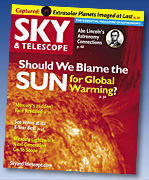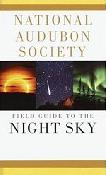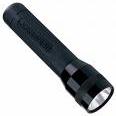Please read the Catalog Program Description. For daily details, please see our Moodle site. (Moodle is a secure site, available to registered students who have completed the week 1 workshop.) End-of-quarter Program Description
Class Standing: Sophomores or above; transfer students welcome.
Prerequisites: Proficiency with algebra; strong reading and writing skills. Willingness to work in teams and to use computers for online assignments.
| SCHEDULE | DUE |
|
|---|---|---|
| Weekend |
Read, observe, work with teammates (pre-seminar, HW, projects)
|
Saturday: Online Quiz on Universe Chapter Sunday: PIQs |
| Monday | ONLINE SEMINAR 3:00-5:00 |
|
| Tuesday | Read, observe, work with teams | Essays or Responses |
| Wednesday | CLASS MEETING in Computer Applications Lab (CAL), 3:00-7:00 (observing afterward if clear) |
|
| Thursday | Read, observe, work in teams | Essays or Responses ... PIQs |
| Friday | ONLINE SEMINAR 3:00-5:00 (in class the first week only) |
Week 1 only: NO CLASS ON MONDAY 30 March (due to family surgery) The first day of class is Wednesday, 1 April. Meet at 3:00 in 2211 Lab 2 (upstairs from the CAL, where we will move to at 5:00) Friday 3 April, meet in 2211 Lab 2 at 3:00. |
Some of these may be available in the college bookstore, but don't count on it. Consider ordering them online to be sure you have them in time. You will need your own copy of each text. | ||||||
|---|---|---|---|---|---|---|
1.Universe: Stars and Galaxies (3rd Edition), by Roger Freedman and (late) William J. Kaufmann, includes all the material we will cover, including modern cosmology (plus a bit on planets). If you prefer a more complete text, get Universe (8th Edition). This includes everything, more than we will cover, a big heavy text. Avoid different editions, or you'll find some material out of synch with our class readings and assignments. |
 |
|||||
| 2. Lecture Tutorials for Introductory Astronomy (2nd Edition) (Addison-Wesley Series in Educational Innovation), by Edward E. Prather, Tim P. Slater, Jeff Adams, Gina Brissenden, CAPER
Paperback: 144 pages |
 |
|||||
| 3. Observing the Night Sky with Binoculars: A Simple Guide to the Heavens, by Stephen James O'Meara
Paperback: 168 pages |
||||||
| 4a. Choose either: A Walk through the Heavens: A Guide to Stars and Constellations and their Legends, by Milton D. Heifetz and Wil Tirion (Teaches traditional divisions of constellations and asterisms)
Paperback: 96 pages |
||||||
| 4b. Or choose: The Stars: A new way to see them, by H.A. Rey (Encourages readers to see their own constellations)
Paperback: 160 pages |
||||||
| 5. The State of the Universe: A Primer in Modern Cosmology, by Pedro Ferreira
Paperback: 320 pages |
||||||
| 6. Mythology, by Edith Hamilton (not Timeless Tales of Gods and Heroes, which is abbreviated)
Paperback: 512 pages |
||||||
| 7. (optional) Favorite Folktales from Around the World, by Jane Yolen
Paperback: 512 pages |
 |
|||||
| 8. Subscribe online to Sky & Telescope (or pick up a copy each month at a local bookseller, or learn how to access it electronically through the Evergreen Library. (You can try subscribing to a hardcopy, but delivery is sometimes long delayed for first-time subscribers ) |  |
|||||
9. (optional) National Audubon Society Field Guide to the Night Sky, (Turtleback) * Paperback (7.5 x 3.8 x 1.3 inches) |
 |
|||||
EQUIPMENT: Get a (1) Planisphere and a (2) BLANK (unlined) Lab notebook from the Bookstore You absolutely need a good pair of (3) BINOCULARS (10 x 50 is good - bigger is too heavy), and will be able to see more with a (4) TRIPOD and mount. Buy or borrow these. |
 |
|||||
 |
Flashlight with RED nailpolish or tape on the end (somebody will have red stuff to share - you need not go out and buy it) and a STRING to hang it around your neck. REQUIRED for observing safety on the roof Good old fashioned protractor - any color (to make a handy sextant) |
 |
||||
| Get your free moon calendar by clicking on the 2009 link at this Celestial Products page | ||||||
Syllabus (under construction) Week 1 - Week 2 - Week 3 - Week 4 - Week 5 - Week 6 - Week 7 - Week 8 - Week 9 - Week 10 - Week 11 |
||||||||||||||||||||||||||||||||||||||||||||||||||||
|
||||||||||||||||||||||||||||||||||||||||||||||||||||
| Faculty Contact: | Dr. E.J. Zita |
zita(at)evergreen.edu |
2272 Lab II |
|---|
